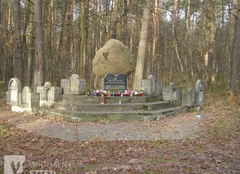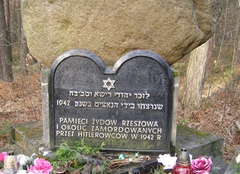Glogow
Pronounced "GWOH-goov "
Jews first settled in Głogów in the 1600s. The community established its first cemetery in 1712 and by the 1730s had added a synagogue for worship.
Although Jews were permitted to practice their religion in Głogów, they were also required to pay a poll tax. In 1765 a town Kahal (Jewish community organization) was established for the purpose of tax administration. The Kahal eventually expanded to provide a number of services for the Jews of the town, including education, charity, and banking. The community organization continued to function when, in 1772, Głogów was absorbed into the Austrian Empire. Beginning in 1792, Jewish children were required to attend a Jewish-German school in addition to cheder (Jewish elementary school).
A devastating town fire in 1846 destroyed two synagogues, the mikvah (ritual bath) and the fence of the Jewish cemetery. By 1870, the Jewish community of Głogów had built a new synagogue and had two rabbis—one for the Kahal and one for the synagogue. In the late 1800s the Jewish population of Głogów reached its peak, around 40 percent of the town’s approximately 2,800 total inhabitants.
The Jewish population began to decline in the following decades about the same time that antisemitic movements began to gain traction in Europe. After World War I (1914-1918), the approximately 1,000 Jews of Głogów found themselves the victims of riots and looting. Even as persecution increased, the community still maintained several cultural and aid organizations including the Chevra Kaddisha burial society and the Tarbut Cultural and Education Association.
Survivor Wolf Finkelman remembered growing up in “a little typical Jewish community, like what they call a shtetl.” He added, “We were like an average family. I had three brothers and three sisters. My father was a shoemaker.”
Finkelman recalled attending services with his very religious Orthodox family every Friday night. He said, “I remember going to cheder,” continuing, “the rabbi was always tough.” Finkelman added, “I even had to wear one of those little hats and I had to wear payot” (side curls).
What remained of the small Jewish community was destroyed after the German army invaded Poland in 1939. Finkelman and his family were forced into the Jewish ghetto in neighboring Rzeszów before being transported to Auschwitz. Meanwhile the ghetto established in Głogów in February 1942 was liquidated only a few months later in June. All its surviving inhabitants were deported to the Treblinka extermination camp.
Glogow: Photographs & Artifacts
-
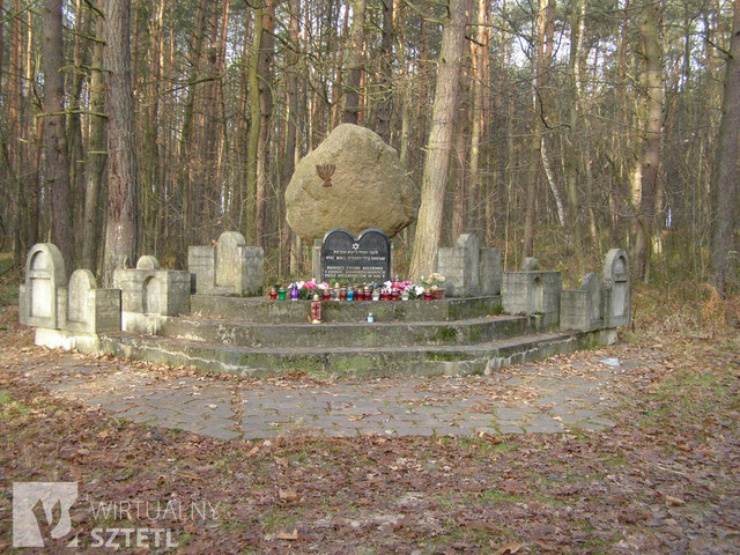 A monument in Głogów honoring murdered Jews, December 2008. Credit: sztetl.org.pl/Andrzej Potocki
A monument in Głogów honoring murdered Jews, December 2008. Credit: sztetl.org.pl/Andrzej Potocki -
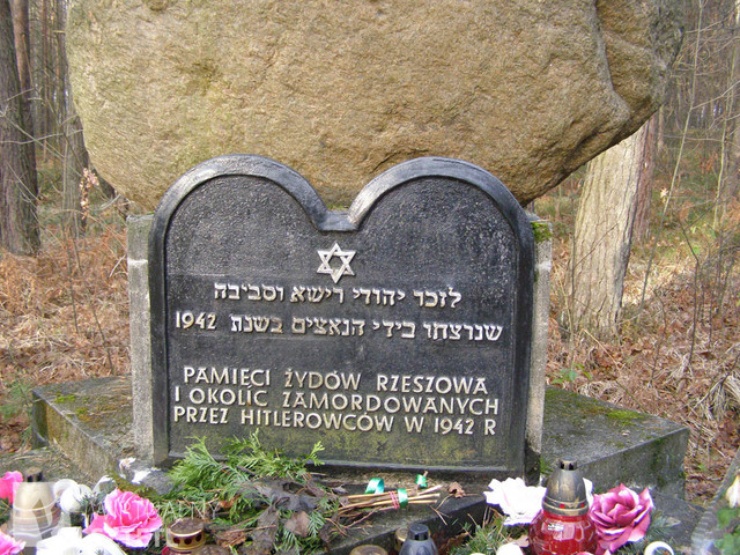 The inscription reads: "In memory of the Jews of Rzeszów and the surrounding area who were murdered by the Nazis in 1942," December 2008. Credit: sztetl.org.pl/Andrzej Potocki
The inscription reads: "In memory of the Jews of Rzeszów and the surrounding area who were murdered by the Nazis in 1942," December 2008. Credit: sztetl.org.pl/Andrzej Potocki
Destroyed Communities Memorial Slope
Glogow: Survivors
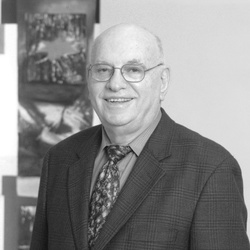
A lot of times I have dreams. My dreams have two forms. In one I would dream back about my family and that would be the good part of it; and then sometimes I would dream that I would get the Germans that are chasing me, or that I am running away from all of that.
